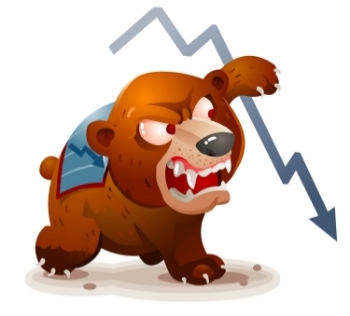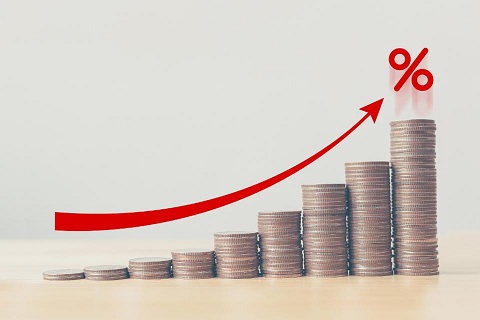
Bear markets are brutal.
- Communities tend to get desperate.
- New users are down bad 80%+.
- Everyone is scrambling to make the pain stop.
- And yet there is nothing to do but wait.
- The best action is inaction.
But that doesn't resonate well.
Just push through the pain?
To hell with that!
We gotta do something!
And that is when the series of bad ideas begins.
As someone who's already survived a brutal 2-year crypto winter I've seen it all.
Hear me out: we should remove the reward pool.
No, we should freeze rewards and perma-bond them.
Let's make a new token to fix the problem.
Let's do this.
Let's do that.
How about not though?
Every single idea that people come up with in a bear market would only make the problem worse. The damage has already been done, and can not be reversed with a reduction of inflation. The damage was caused by stakeholders not selling during the good times when there was clearly a huge demand to buy. Everyone gets greedy during the bull market, which inevitably leads to an insufferable bear market.
If you want to fix the problem, go back in time and make sure Hive doesn't spike to $3.60. Keep that value outside of the network in case the price crashes and you can buy back in for an x5 gain. That's where we are at right now. Trying to fix the dump after the fact is not an option. Can't fix something that isn't broken. Pump and dumps are the natural order of things unless we actually take steps to stabilize the currency.

How do we stabilize a currency?
It's quite simple really. We need the ability to make number go up and the ability to make number go down. This is the key to creating an elastic money supply that can flux with supply and demand. It's quite obvious, but no one in crypto is actually doing it, which really signals just how greedy and ignorant everyone is.
Everyone understands the mechanics of number-go-up.
Everyone wants number to go up. That's not the problem. The problem is having the self discipline to actually deflate demand and lower the value of the asset when demand is too high and guaranteed to blow up in our faces. Guess which unlikely party actually understands this concept? The Federal Reserve. Interest rates are increasing and the FED is crippling demand, increasing the scarcity of USD in the process.
Here's what everyone misunderstands:
I've already gone through great lengths to explain why crypto and fiat are opposites. Fiat is a debt based system, while crypto is based on true value and ownership of the underlying asset. In the fiat system, even when you hold cash in your pocket, that's not real value; it is still debt. You own the debt. Owning debt is a bit different than owning real value.
So the FED increases rates to reduce demand.
Why? Because it's debt based. Borrowers do not want to pay higher interest rates, thus the demand to take out a loan goes down. The problem with crypto is that people think the same ruleset applies, when it is really the opposite scenario.
Because crypto is not a debt-based system, interest rates are actually called yield (never owed back to anyone), and they are paid directly to the users, who also own the decentralized platform. People don't seem to understand that WE are the central bank. They will parrot the meta and say things like: "Be your own central bank," but they don't actually understand what that means in the context of monetary policy.
If you increase 'interest rates' on crypto, that's just printing more inflation. 99% of people in crypto believe that printing more inflation reduces demand because the currency is being devalued. Debased currency is exactly why crypto exists in the first place, and thus we should not seek to do it. All of these assumptions are provably ridiculous and false.

When a central bank debases a currency, who benefits? Everyone is in agreement that it is the banks and the "too-big-to-fail" zombie corporations and governments that benefit from the debasement of currency. The citizens own the debt, and when that debt is debased, value transfers from the citizens to the institutions in question. Everyone is on board with this logic. No one argues it. These are facts.
When WE are the central bank, would we believe that debasing the currency is bad for us? Does that make sense? It absolutely does not. We are the central bank. We control where the inflation is allocated. It does not make logical sense to say that inflation is bad when you are the one controlling it. No one would argue and try to say that inflation is bad for the Federal Reserve, yet that is the exact argument these same people make for crypto. Make it make sense.

Inflation as an investment.
Again, because crypto is not debt-based, all inflation created is an investment. Bitcoin only invests in one thing: security. 100% of all Bitcoin inflation goes to the miners, and the miners are the only ones preventing double-spend attacks. The niche of Bitcoin is to be as simple and secure as possible, and it does a very good job.
What does Hive invest in?
- 10% to witnesses (security)
- 10% to decentralized @hive.fund (development)
- 15% to HP holders. (largely pointless allocation)
- 65% to reward pool (content creators and 'curators')
- 10+10+15+65 = 100%
- 20% APR (separate from above) to HBD holders in savings.
Aside
You'll notice that I make the claim that the 15% to HP holders is largely pointless. Personally I'd rather see that money allocated elsewhere, like an internal market AMM. The only value of this expenditure is that it kicks out a small amount of yield to accounts that delegate their tokens to another account. So even if you are delegating all your coins to someone else and take a break for a couple years, you can still come back with more coins than when you started. I don't think this benefit is worth having around. It's somewhat of a relic from the past that existed before curation bots were a thing. Hive has better infrastructure now.
Personally I'd rather see that money allocated [elsewhere]...
Even this statement that I just made is somewhat ridiculous. Hive doesn't have a budget. We can pick any inflation schedule we like. We can allocate inflation to anything we like. There are no rules except the ones that we create. We can print money on demand and invest it on anything.
Inflation is the killer dapp.
As stated, inflation/yield/interest within the cryptoverse is an investment. If the money we spend is spent on things that create more value than their cost: we can print money forever, profitably. It's a simple concept that no one in crypto seems to understand. If you make good investments, you make money. If those investments were subsidized using Hive's inflation rate then the network itself owns those investments and profits from them.
There is a reason why Hive allocates inflation to five different things and Bitcoin only allocates inflation to one thing. We believe that the way we allocate inflation has more value than not. Circling back to the main topic at hand: anyone who makes the claim that those inflation allocations are no longer profitable because we are in a bear market? Don't listen to them. That's not a valid argument. It's a fallacy. It's bargaining with reality.
Because lowering yield inside a bear market just makes it worse.
The time to lower yields is during the middle of the BULL market. Once we get to the bear market, it's already too late. During a bear market, we need to be increasing demand through printing more money, not doing the opposite. Yield needs to increase during the bear to incentivize diehards to stack up and get as many tokens as possible. Then yield needs to be slashed as spot-price goes up and we unwind that leverage/demand.
Buy low, sell high
It's a simple concept, that again, people don't seem to understand. When we print more money, we can think of that as going long and "buying" the asset. When we stop printing money, that's a short. It's the same as economic easing and tightening. Print more money to ease, print less money to tighten. Again, such simple concepts that everyone gets backwards for whatever reason.
I blame Bitcoin and the Federal Reserve.
Bitcoin's entire maximalist brand revolves around the 21M hardcap. Bitcoin has had great success, and therefore people want to emulate that success. They get tricked into the narrative that you need a hard cap and deflationary economics to create an asset that does well. That is incorrect. The real value of Bitcoin is that it is simple, unchangeable, reliable, and secure. The hardcap was not a requirement for success, but rather a symptom of these other variables coalescing together.
Bitcoin does not have a hardcap because a hardcap is required for success; Bitcoin has a hardcap because a hardcap is required for security. It is the security of the system that actually has value. If Bitcoin allocated inflation to other things it would be adding needless attack vectors into a platform who's primary attribute is security, which is clearly unacceptable.
This is why all maximalists believe that the hardcap is a recipe for success, when it is really not. It's just a less risky and more conservative strategy, which is perfect for the first crypto ever created. This allows other crypto's to rise up and take more risks within the ecosystem. This is not a competition. Bitcoin helps every other asset to thrive.
Federal Reserve is also to blame.
This is what happens when people conflate [centralized inflation within a debt-based system] to [decentralized inflation within a collateral-based system]. When Fiat central banks increase interest, demand goes down. Crypto central banks increase interest, demand goes up. The relationship between the end-user and a crypto network is the opposite of that of their relationship with fiat/debt. Everything about crypto is the opposite of how the legacy economy works, which is why people so often get it exactly wrong.
Delayed reaction.
Two things happen when interest rates are modified (in both fiat and crypto). Speculation happens instantly, while actual fundamentals take months to play out. The other day I read that it takes 9 months for FED fund rate increases to actually fully circulate through the economy. 9 MONTHS! lol! So basically the economy is going to crash into the mountain because they increased rates so quickly without even waiting to see what happened. Very fuck-around-and-find-out vibes.
Within the context of crypto, the exact same rules apply to interest rates and yields. Speculation happens immediately, but fundamentals aren't going to kick in for nine months. On paper, anyone could double their emission/inflation rate... guess what happens?
What would happen if we increased HBD yield from 20% to 40%? Well, on the first day, nothing would happen on a fundamental level. One day of interest is a proverbial drop in the bucket, and the bill isn't going to come due for months and months (aka compounding interest). But what about the speculation?
All of a sudden HBD holders see that 40% and they are like wow... I need more HBD. So more HBD gets bought instantly on the speculation of 40%. That injects capital into the system, increases the demand for our debt, and pushes the price of Hive up in the short term. Then, a year down the road, the bill comes due, and if we were greedy and left it at 40% for too long and increased our debt ratio in a completely unsustainable way... we are going to be punished for that mistake down the line in a big way.
This is yet another classic example of why we increase emissions during the bear market and we lower them during the bull market, not the other way around. I've made this claim like half a dozen times now, but it's worth mentioning again and again, because most people are not going to believe it until it is actually proven in the field. Books will be written about this topic. Stability matters, and not a single crypto out there is attempting to create an elastic supply. Still early.

Conclusion
As a general rule of thumb, if someone has an idea that stems from the concept that inflation is devaluing the cryptocurrency, it's not a valid idea. If someone thinks they've come up with a good bear market idea to make the number stop going down, they need to show that the idea is also a good one during the bull market as well. If the idea is theoretically good inside of the bear market but not good inside of a bull market, it's not a valid idea. Rather, this is simply fishtail reactionary thinking that will lead to further instability.
During max pain, anyone who tries to say we need to lower inflation needs to be called out. That's exactly the opposite of what we should actually be doing. Lowering inflation on a non debt-based system lowers demand, and will lower price as well. Overcorrections do not lead to a balanced ecosystem. The best course of action when you lose control of a car is not to turn in the opposite direction, but rather to just keep driving straight forward. In fact, professional drivers will turn into the direction they are being pushed to regain control. Emphasis on 'professional', because if you try to employ pro-moves as a novice you may end up in a full head-on collision. This metaphor applies to crypto and economic policy quite often as well.
So what's the best course of action for Hive in a bear market? Do nothing. Just sit there and take it. There is nothing to do but wait out the storm. Reactionary policy is never going to work when it takes 9 months for fundamentals to kick in. We have to see the storm coming 9 months in advance and preemptively take steps to mitigate it. Easier said than done, and that time has already come and gone for the crypto market, unfortunately.
Posted Using LeoFinance Beta
No comments on this striking provocation?
I like the concepts explore here. I have to admit, I didn't fundamentally understand crypto as you described it, though I begin now, step-by-step. I'm participating in the distribution of voucher tokens on an Algorand dApp. The vouchers will burn at some rate for the protocol's governance token.
So they're decentralizing by making it widely available, i.e increasing yield. It's beginning to make sense.
But you're the second indication I've come across that the recession we all fear takes place about 12 months from now. I feel more inclined to understand that concept and act accordingly, for once.
Even though your arguments seem logical there is still something at the back of my head telling me "it has to be wrong" (about printing more crypto during bear market). Even less do I see the witnesses and community in general to agree for such change. However from technical perspective it would be very easy.
Instead of expressing whole inflation as percentage of Hive supply asymptotically approaching certain minimum in distant future, we could split it into two uneven parts: small fixed percentage of Hive supply (to accommodate expected growth of the network) and fixed amount of HBD. Then the HBD part would effectively turn into more Hive during bear market or less Hive when the price increases. Due to being fixed amount, in the long run it would be less and less percentage of Hive supply (compatible with current consensus of falling inflation rate), fall further reinforced by the fact that HBD is tied to inflationary fiat USD.
Here is the inarguable point that most of this logic is founded on:
We can print unlimited money if the ROI on that money yields a net gain.
This is a mathematical fact and can not be argued.
The problem is that people in crypto fail to recognize the significance of this fact.
We've been brainwashed to think that inflation is bad because of the fractional reserve banking.
We've been brainwashed to think that inflation is bad because of Bitcoin's deflationary success.
Inflation is good when we control it and allocate it to smart investments.
If we print a million dollars and then get a return of $2M, that is a massive win, no matter how you slice it. Returns like this are very hard to get in the legacy economy (and high risk), but very easy to get in crypto when we control the means of production and the currency itself.
If we want an elastic currency that can bend given changes in market demand, then we need to come up with ways to manipulate supply. We can not increase demand by taking away the rewards and incentives that create demand (this should be obvious, but for whatever reason is not). Again, the crux of this issue is lowering the demand/price during the middle of crazy bull markets, which is something that no one has ever done before. Once we can do that, pumping the bear market with stimulus is a trivial process.
If crypto wants to compete with fiat, at least some networks are going to need an elastic supply that promotes stability. It is all but guaranteed that eventually tokens will pop up that have these kinds of stabilizing elastic features.
And you'll also note that I said Hive should do nothing, for various reasons that I didn't even get into because the post ran too long, just like this comment.
Ok, I think I know what was the reason for the whisper in the back of my head. A lot of value of fiat comes from the fact that you are required to use it to pay taxes, in other words it acts as a deterrent against government thugs. Crypto has no such power backing it up. Even if it was possible to form a community that earns and spends only crypto, never exiting to the fiat (I believe it will be possible in the future), if it became widespread it would be dealt with with physical force.
Holding fiat comes with a lot of bad options, so you might just as well stick with least bad choice (which is to hold onto the currency you use daily, at least in necessary minimum amount), on the other hand crypto comes with many good choices. Therefore while central banks can benefit from debasing fiat currencies, if we try the same we might find ourselves being outcompeted by other crypto, because general perception is that bigger inflation means weaker currency. It might be self fulfilling - perception is that inflation is bad therefore people will gravitate towards cryptos with low inflation thus lowering value of those with higher inflation - but unless perception changes, the effect will hold.
Hello edicted
Nice article man.To deal with worst monetary situation governement prints notes.It creates inflation but they are the only one benefited by that move.Only public suffer it.
As In crypto there is no regulator, no single person or institution (community) can be benefited by that. Introducing more coins, I think,is a very positive thinking in this regard. In fact it will help the ecosystem unlike fiat.
It is a impressive thought. Hope everyone on hive reads your article and thinks the same as you do.
Well it does incentivize (somewhat) locking up staked HP. Sure, curation is the bigger incentive to stake, but that extra 2.87% earned on staked Hive incentivizes even more.
Yes, but if we allocated that 15% so something more useful, like an internal market AMM, it would build a lot more value, and it would pull stake out of HP and from the exchanges to populate the LP. So token price would go up, and votes would increase in terms of Hive, which would be increased in terms of USD. I did the math on it way back in the day and calculated that it should suck up about 40M Hive. That's way better than passive income that doesn't do anything, because it provides $40M worth of liquidity to the Hive/HBD pair as well, which is magnitudes bigger than the CUB farm.
In your explanation you point out that inflation is printing of more Hive. So inflation isn't a reduction in demand, it's an increase in supply. Increasing supply lowers price, and a bear market is the result of reduced demand, which also reduces price. This is why reducing inflation in a bear market for collateral based assets - not debts - opposes reducing prices, by reducing supply to meet the reduced demand.
It may not increase price, but increasing supply during reduced demand will further reduce price, by increasing supply beyond that already oversupplying the market during reduced demand, and reducing supply to match reduced demand should counter the tendency of price to go down.
I strongly disagree with your claim that reducing supply during a bear market will reduce price.
Thanks!
I mean disagree all you want: you're wrong.
Everyone knows that injecting money into a struggling economy can help to dig it out of the hole.
It's basic economics. Uncontested. The only argument to be make is whether or not it is sustainable or more akin to giving a crack addict more crack so they can push off the pain to a later date. The legacy economy has a bad track record. Crypto can do better, as it is much more agile and precise.
You are under the impression that inflation gets printed all at once, it does not.
If today I have 30% yields, and I jack inflation up 100% and create 60% yields, guess what?
Those yields are measured year over year.
Speculation prices in the increase immediately.
They want the higher yields.
Demand increases, but supply is exactly the same on day one.
Did I really not explain this well enough the first time?
I guess it's a good thing that no one is attuned to these concepts.
Just need to get back to building my own token so I can prove it in the field.
In fiat, inflation is debt.
In crypto, inflation is an investment.
There is no argument.
If we get a positive return on the investment, we can continue printing money forever and never have our currency devalued. Why is this such a difficult concept to understand? It's a mathematical fact. The only argument to be made is if the investments we are making are worth it or not. Stick to the issues that actually need contribution. Stop arguing with facts. Facts are facts. If the network prints a million tokens, but generates twice as much value, we can print money forever. Seriously I don't get why this is such a hard concept to understand, but clearly you are not the only one to have a knee-jerk reaction to these claims. As stated in the original post, your aversion to inflation, like the rest of us, stems from centralized corrupt allocations that leech value away from the citizens. That's not what we are talking about here... at all.
And what did you get out of increasing supply?
You completely miss the point and assume you get nothing out of it.
AKA an investment that returns $0 in value.
Should we reduce inflation to zero on Hive?
Obviously not.
Think about why.
It's because the value of the inflation is higher than the dilution rate.
If we take away block rewards the value of Hive crashes to zero instantly.
If we take away the reward pool we lose our ability to decentralized efficiently.
Again, I'm floored that this is such a difficult concept to understand, seemingly across the board for the entire cryptosphere.
You specify nothing as the means or reason to gain from further pressuring price. What specific mechanism causes Hive to have a yield?
Hive isn't a bond and has no yield. Bonds have yields. When you buy a bond it has a face value that it's worth at maturity. The difference between the price you pay for the bond and what it's worth at maturity is the yield. That's why when the price of bonds goes down the yield of bonds goes up. Hive has no yield that goes up when price goes down, because you get the face value of the Hive when you buy it.
Marbles have no yield, but you can do something with marbles that creates a return on investment, like fling them at fleeing antelopes to gain meat, which you can trade for more marbles than you had to fling at antelopes to get the meat with. You can buy Splinterland cards with Hive and win games that payout more Hive than you had to pay for the cards. You can get a return on investment by using Hive, but Hive has no yield, because it's not a bond.
If the price of Hive is in a bear market, pumping out more Hive gains no one anything at all. It just makes the Hive that was already dropping in price worth even less because now there's even more of it people don't want enough to pay the old price for. If the price of bonds goes down the yield of bonds goes up, and if you pump out more bonds in a bear market the yield of those bonds will be increased because the price of the bonds will go down. That just means the bond issuer will be paid less for it's bonds when it sells them.
If you want to stabilize price in a bear market, then deflation could be one way to do it. If supply can be matched to demand, theoretically the price can be maintained by not offering any Hive for sale at lower prices. The only way to do that would be deflation during bear markets. If the price starts dropping, start pulling Hive off the market until the price offered for Hive goes back up to the desired price.
Just reducing inflation isn't enough. You'd have to be able to reduce the amount of Hive on the market, to suck it out of people's accounts in a reverse rewards pool, and ain't no one interested in that, for very good and real reasons. Or you could do what the UK just did.
The UK just bought a lot of it's bonds, deflating the bonds on the market and stabilizing the price, to prevent the price of their bonds from crashing to junk bond levels and increasing the yield of those bonds to the point that the market would buy them. They deflated their bonds, pulling them off the market by buying them.
Hive really has no mechanism to do that, since Hive isn't a bond. If you pump out a bunch of Hive you can't use it to buy the Hive on the market to stabilize the price of Hive.
Doing that doesn't make any sense for very real reasons. People have been doing these things for a long time, and they're done the way they are for those real reasons.
!PGM
!PIZZA
!CTP
!LUV